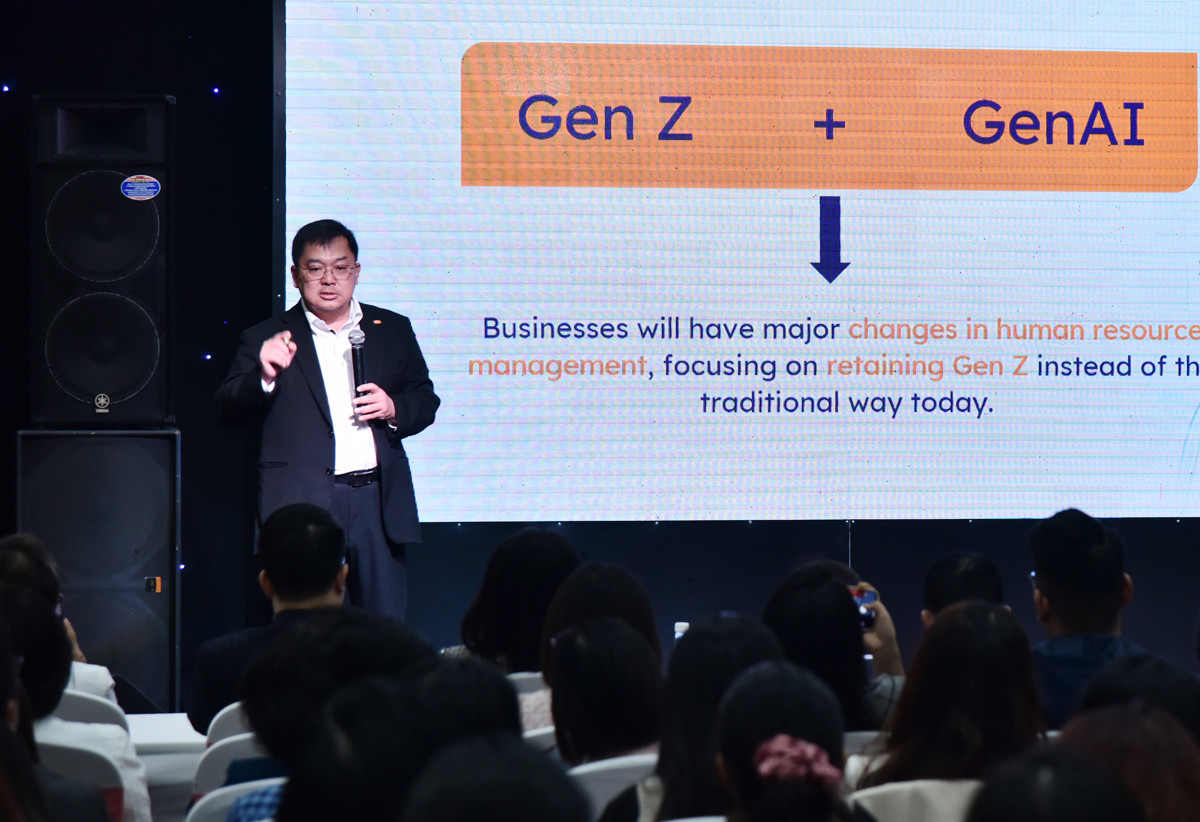
Participants at the conference on human resources administration – TalentX 2023 – held by VINASA (Vietnam Software & Information Technology Services) recently agreed that high technology is leading to significant changes in human resources administration.
VINASA’s Nguyen Tuan Huy cited statistics released by international institutions as reporting that 94,000 jobs were cut in the technology market in 2022.
Microsoft, Alphabet and Amazon made the sharpest job cuts. Meta laid off 11,000 workers, or 10 percent of its labor force.
Google dismissed 12,000 workers, and Twitter 6,000 workers, or 80 percent of their workforce.
“The figures are just a small part of the staff reduction movement which is expected to spread all over the globe, including Vietnam,” Huy said.
As of the first quarter of 2023, after downsizing the global staff by one quarter or 20,000 jobs, Mark Zuckerberg, the founder and CEO of Meta, affirmed that the company is now working more effectively, partially thanks to the AI (artificial intelligence) application, especially in workforce administration.
Technology and HR (human resources) experts from FPT, KPMG, Udemy Business and Kingsman said at the conference that GenAI, understood in the broadest sense of the word, includes automated equipment and software and that it plays a core role in helping businesses optimize their operation costs and human resources while still ensuring good business results.
Vu Thi Le Lan from KPMG, citing a survey conducted by the firm of 1,300 CEOs in 11 important markets, said CEOs consider GenAI an investment priority with expected capital recovery in 3-5 years.
"The risks and challenges from GenAI are also predicted to affect the growth and stability of organizations. One of the challenges for businesses in AI deployment is the lack of professional capability and necessary skills,” she said.
“In order to turn GenAI into a supporter, we need to have knowledge to master it,” Lan added.
Udemy Business, the world’s largest platform for business online study, noted that there has been outstanding development in learning AI-related skills on Udemy.
The number of workers learning AI-related skills increased by 60 percent with the number of ChatGPT learners in the US rising by 5,226 percent in the third quarter alone.
The labor force in the future
Speaking at the conference, Hoang Nam Tien, who has worked as high ranking executive officers at technology firms, and is now Vice President of FPT University, drew the participants’ attention to the importance of GenZ, or workers born between 1997 and 2012, and GenAI.
Emphasizing that GenZ will be the major labor force at businesses, Tien said 48 percent of the 65,000 workers at FPT belong to GenZ.
Globally, GenZ is expected to account for 50 percent of the labor force. Therefore, businesses need to make changes to suit the new generation of workers.
Talking about the impact of GenAI on jobs, Tien said AI, BI (Business Intelligence), and robots at enterprises and factories have and will cause workers in many business fields, including coders, accountants, bank officers, credit consultants, salespeople and marketing officers, to lose their jobs,
“This will influence businesses’ human resources administration, and require talent administration to focus on creativity,” Tien said.
With the formula “GenZ + GenAI” for the workforce in the future, Tien stressed that HR directors have to understand GenZ and GenAI.
HR administration divisions need to update information annually, quarterly and even monthly, to know which work can be done by robots and AI, so businesses can redirect their focus.
As for the workers to be replaced by AI and robots, they need to to obtain new skills so that they can shift to other fields and take other work.
For GenZ, it is necessary train them to turn them into creative workers in their fields.
“Marketing officers, for example, have to become creative in initiating new ideas that help improve businesses’ performance,” Tien said.
Trong Dat